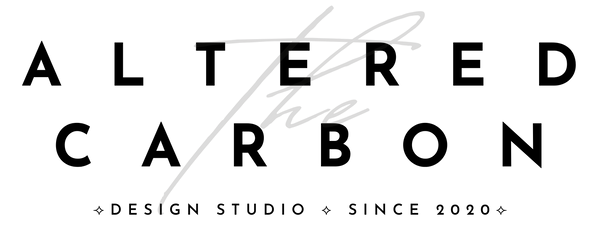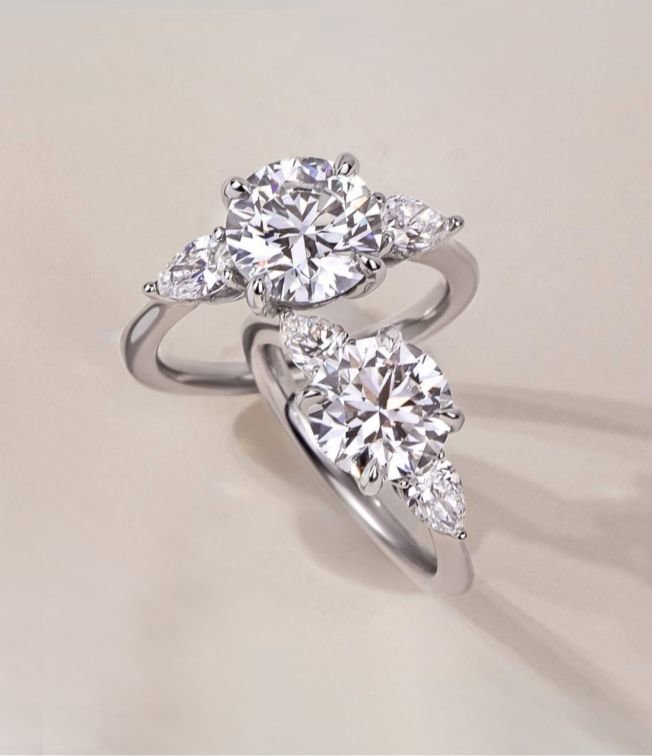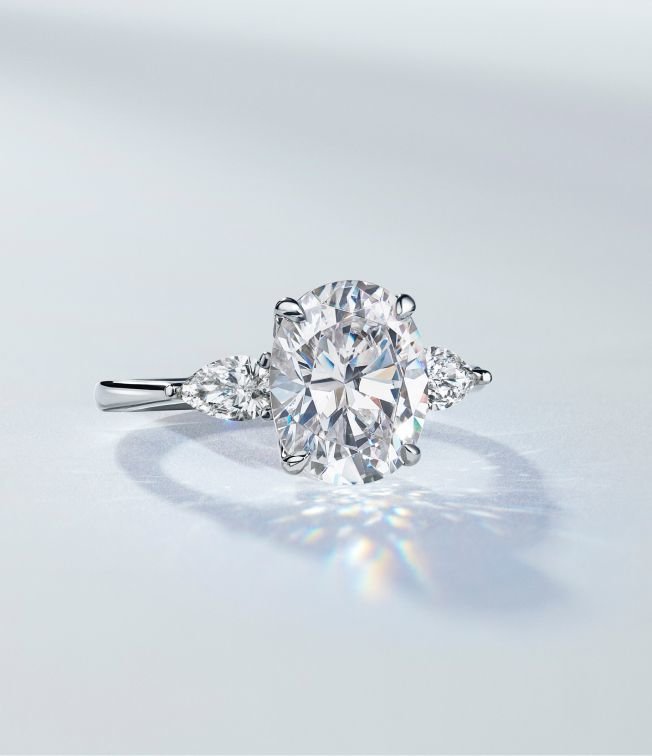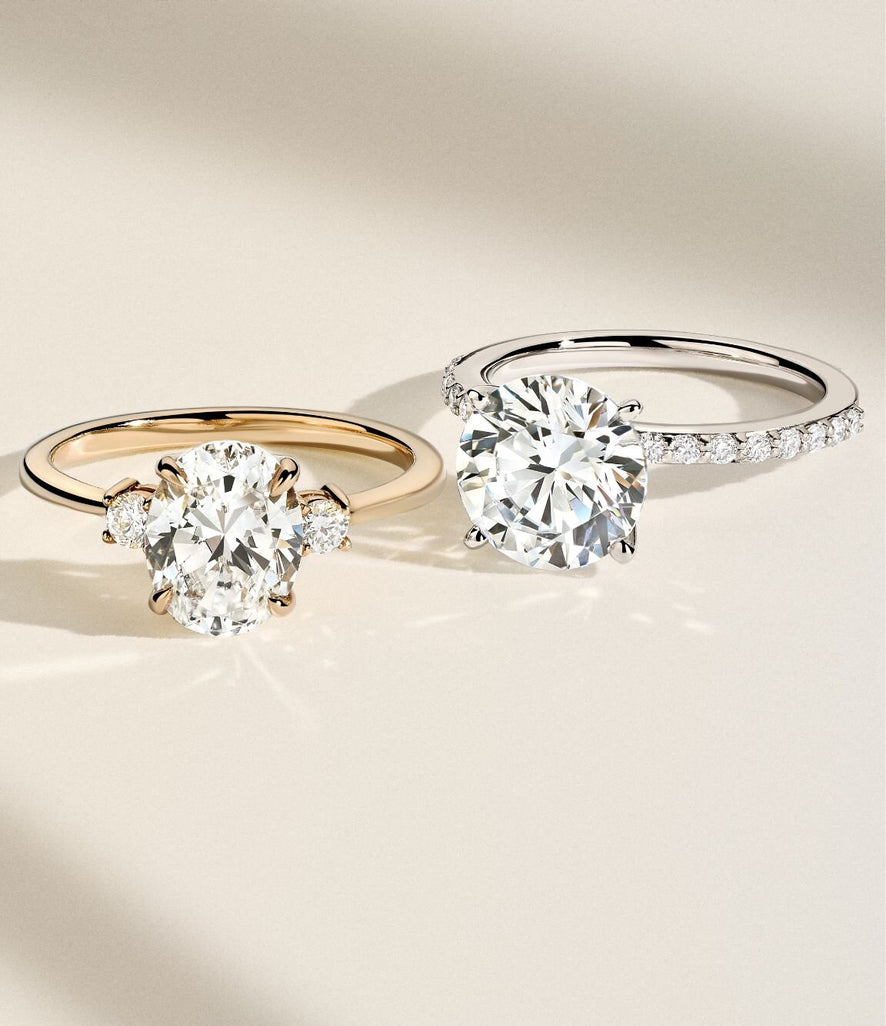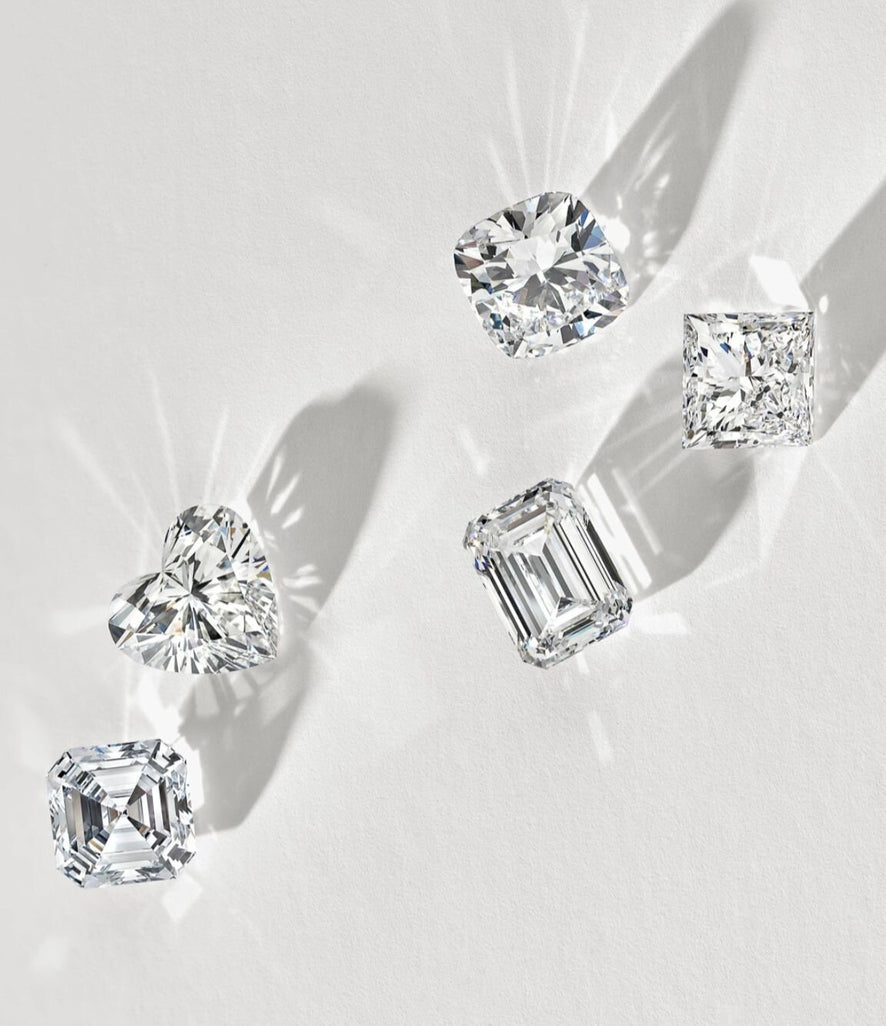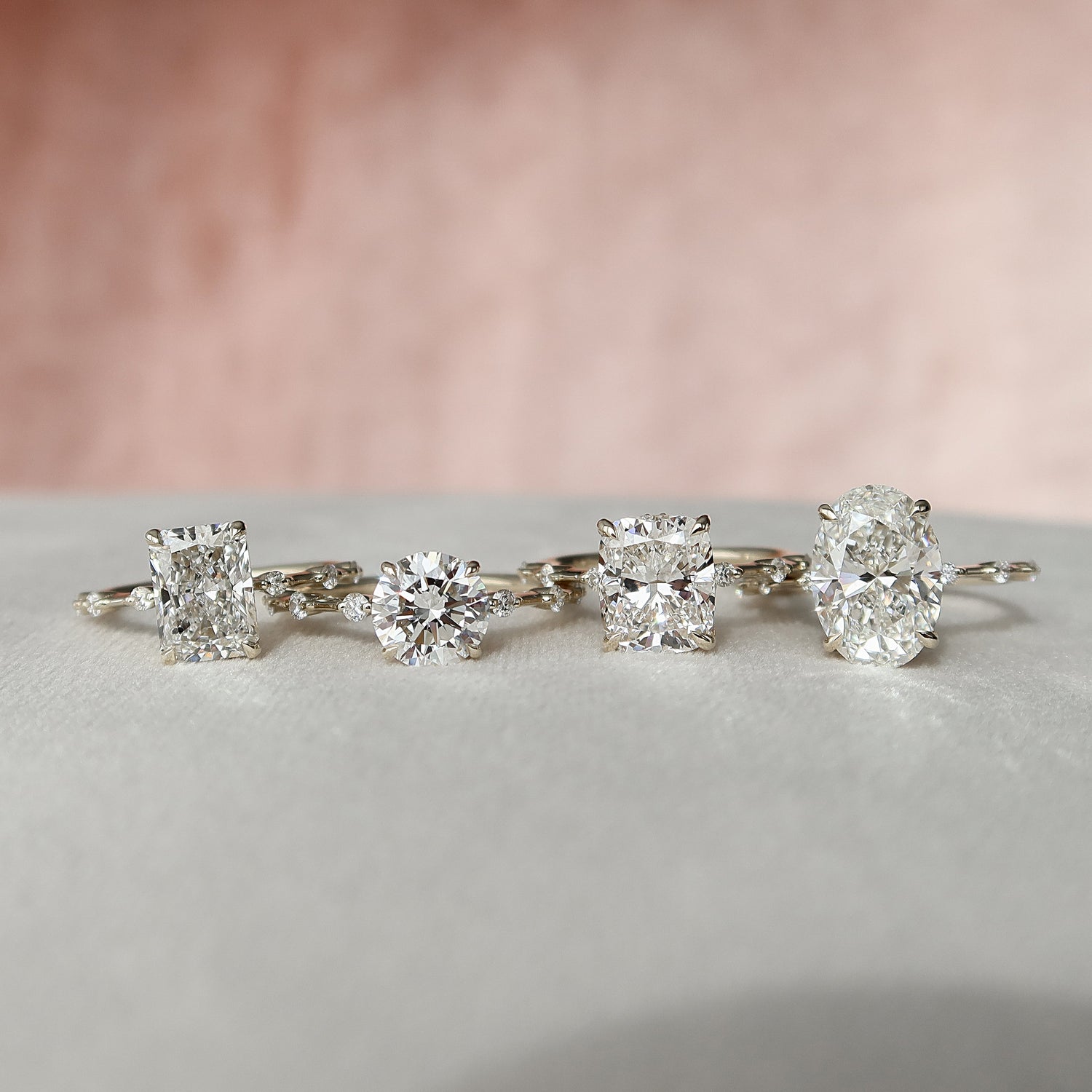
What is Diamond Cut?
As one of the 4 C's used to describe and determine diamond quality, cut references how well a diamond's facets interact with light. Though it's often confused with shape, which refers to the external outline of a diamond (such as round, oval, or pear), cut is actually responsible for a diamond's ability to transmit light and sparkle. Precise artistry and craftsmanship are required to cut a diamond so that its proportions, symmetry, and polish deliver maximum light return and stunning shine. The better a diamond is cut, the more sparkly it will be.
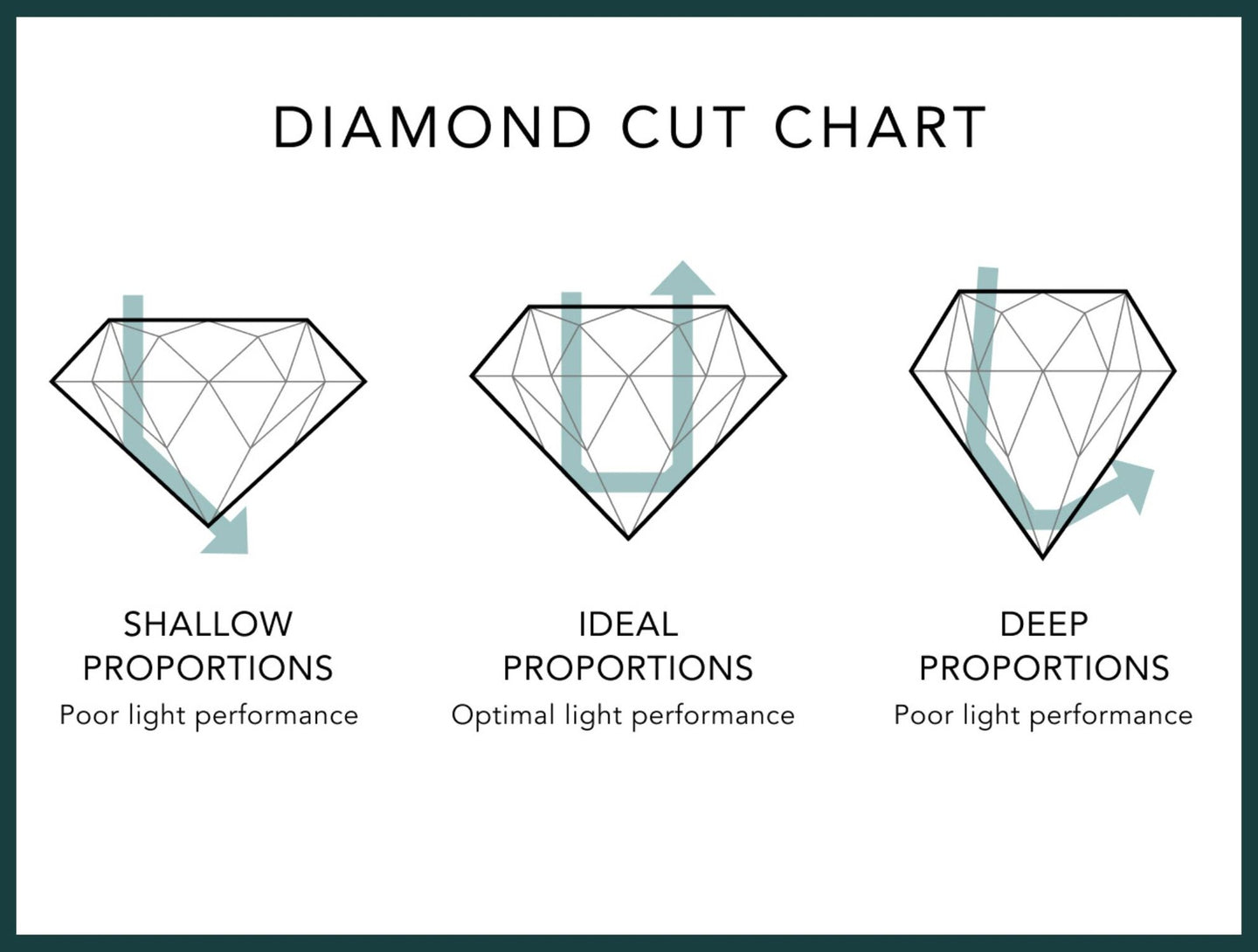
Why is Cut Important?
Cut is a crucial factor to consider when selecting a diamond, as it is accountable for its sparkle. An excellently cut diamond will deliver the classic, unmistakable light show you expect from a diamond. A poorly cut diamond, on the other hand, will be much duller. As cut can significantly impact the appearance of a diamond and the light it emits, it's essential to understand what it is and how it's graded.
How is Diamond Cut Graded?
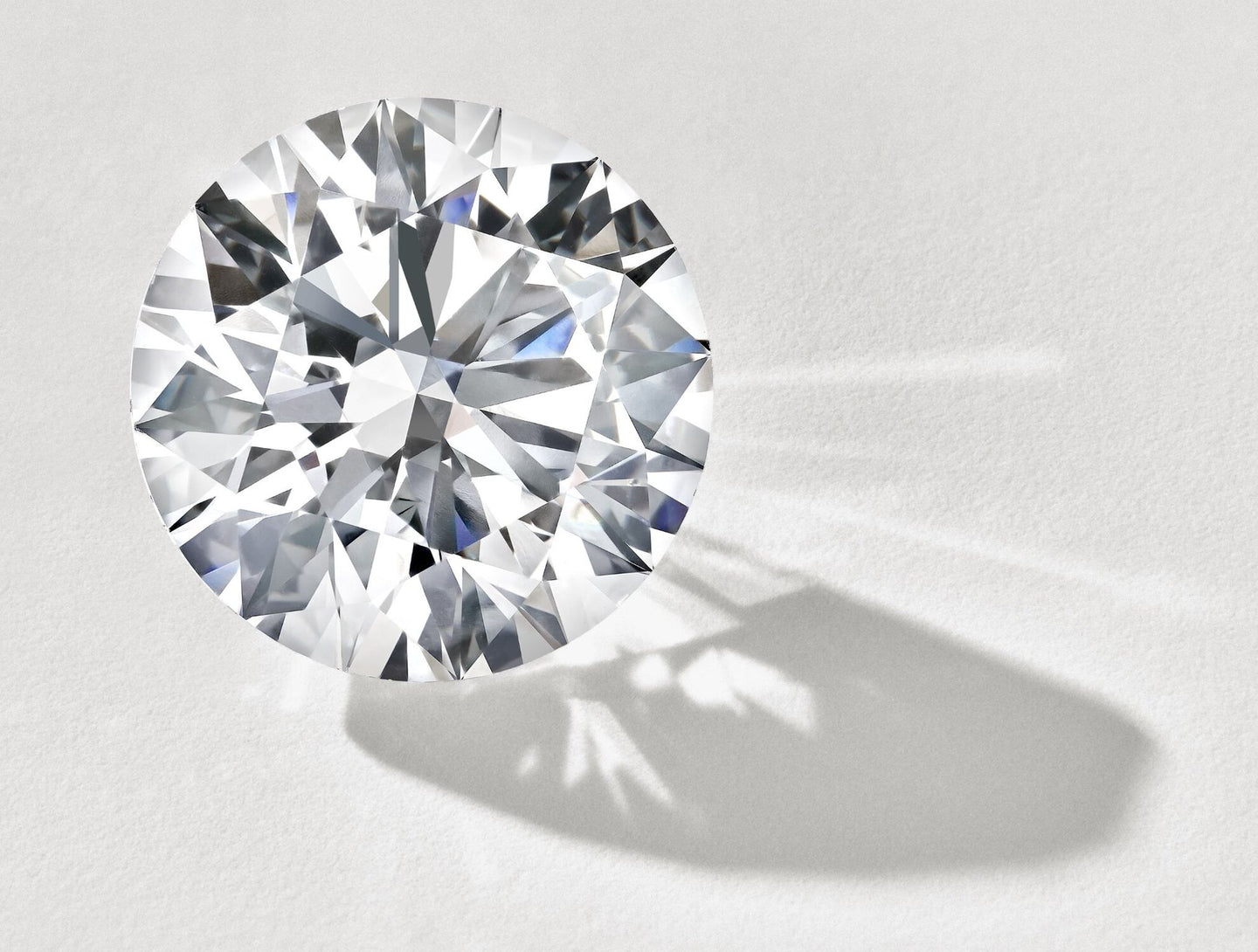
The Gemological Institute of America (GIA) has extensively studied how light interacts with round brilliant cut diamonds to better understand the factors that contribute to their appearance and sparkle. The result of their studies was the GIA Cut Grading System, which standardizes and evaluates cut quality on appearance (brilliance, fire, scintillation), design (proportion), and craftsmanship (polish, symmetry). Their cut scale ranges from Excellent to Very Good, Good, Fair, and Poor.
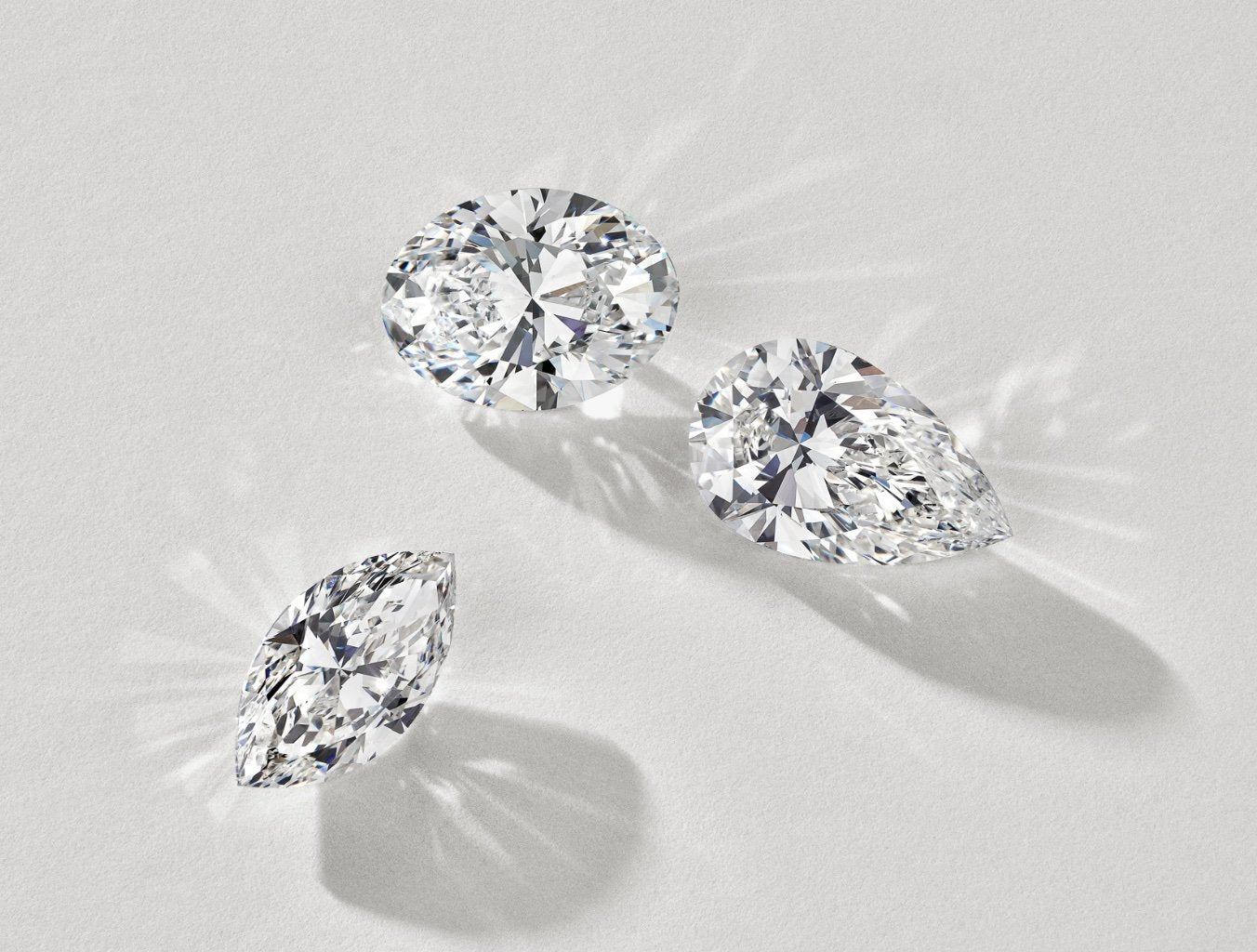
Most independent institutes use their own language to rank the overall cut of a diamond. For example, the International Gemological Institute (IGI) adds an extra rank atop Excellent, rating their highest-quality diamonds as Ideal. At The Altered Carbon, we also use specific scale language to help our customers understand subtle cut differences affecting quality and price. We base our scale on the cut specifications the certifying gemological laboratory provides and rank diamonds from Super Ideal to Ideal, Very Good, Good, Fair, and Poor. This means that, for example, a GIA-certified diamond with an Excellent cut grade will be listed as a Super Ideal or Ideal diamond on the Altered Carbon site.
Cut Characteristics
To best understand the cut grade of a diamond, it's important to understand the following characteristics that, when evaluated together, define a high-quality cut.

Table
The flat surface at the top of the diamond.

Crown
The top portion of a diamond, from the girdle to the table.

Girdle
The flat surface at the top of the diamond.

Pavilion
The lower portion of a diamond, from girdle to the culet.

Culet
The facet or point on the bottom of the diamond's pavilion.

Depth
The height of a gemstone, from the culet to the table. Determined as a percentage of the overall diameter of the gem.
Cut Grades
Now that you understand the characteristics considered when a professional determines a cut grade let's explore the Altered Carbon scale to help you pick the perfect diamond.
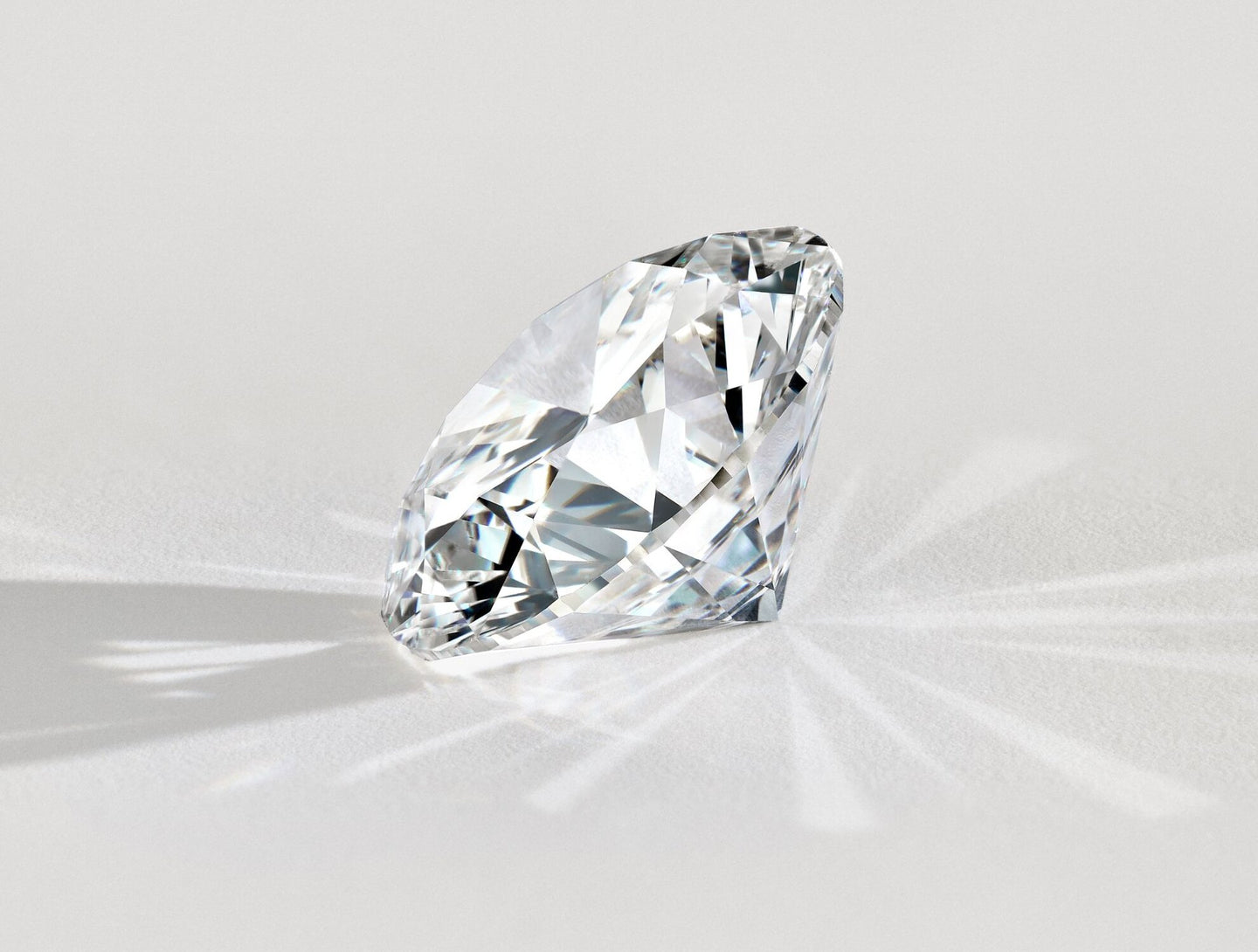
Super Ideal
A Super Ideal cut diamond's proportion, polish, and symmetry have all received a top grade (known by the GIA/IGI as Triple Excellent). These are the highest-quality stones and feature incredible, eye-catching sparkle.
Ideal
An Ideal cut diamond's proportions must be within the ideal range, and polish and symmetry can each be one less than the highest grade. To the untrained eye, an Ideal diamond is just as beautiful as a Super Ideal diamond of the same color and clarity.
Very Good
A Very Good cut diamond's proportions are just outside of the ideal range, and polish and symmetry can range from the highest grades to more moderate levels. These diamonds can present an incredible sparkle at a more accessible price point.
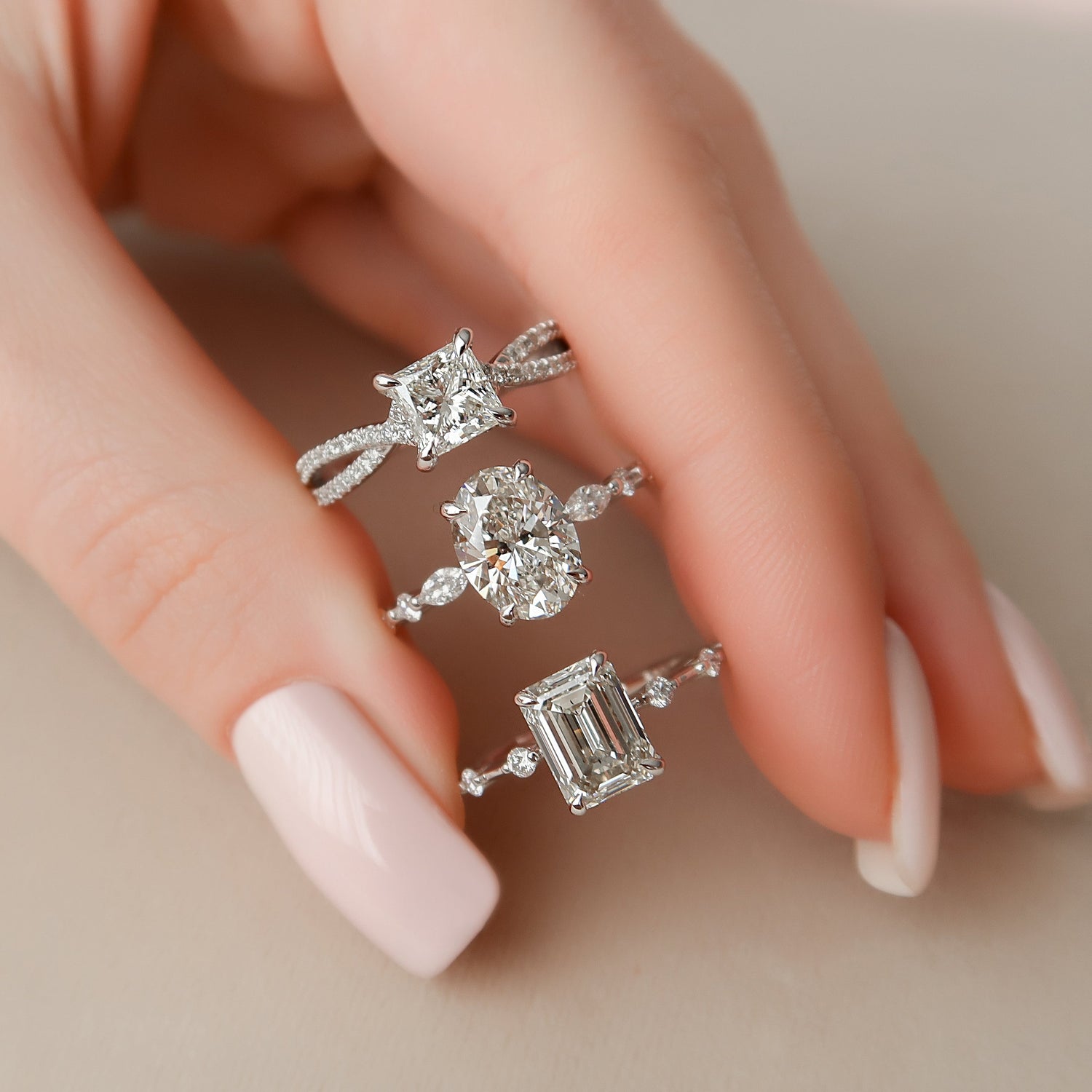
Good
A Good cut diamond's proportions will be only slightly imperfect, allowing for plenty of light to reflect light. However, good-cut diamonds will not be as bright as higher-cut grades, as flawed ratios will leave more dark spaces in the stone, causing it to look duller. Depending on the balance of the other 4 C's, good-cut diamonds will generally feature a more accessible price point.
Fair
A Fair cut diamond has little light refraction compared to diamonds with higher cut grades. This is caused by gray areas surrounding the crown or areas of darkness or dullness within the table, girdle, or both. While Fair cut diamonds will be more accessible from a price point perspective, their lack of sparkle deters many customers from selecting them.
Poor
Poor cut diamonds are generally not recommended as light spills from their pavilion, culet, or both. They will show a marked reduction in fire and scintillation from those with higher cut grades, as the dark areas are prominent and distracting. Please note that The Altered Carbon does not carry Poor-cut diamonds.
Different Types Of Diamond Cuts
Now that we've discussed the different characteristics of cut grading, it's time to discuss how the facets of a diamond are cut. Note: it's important to remember that diamond cut, and shape are not the same thing — but diamond shape informs how a diamond is cut.
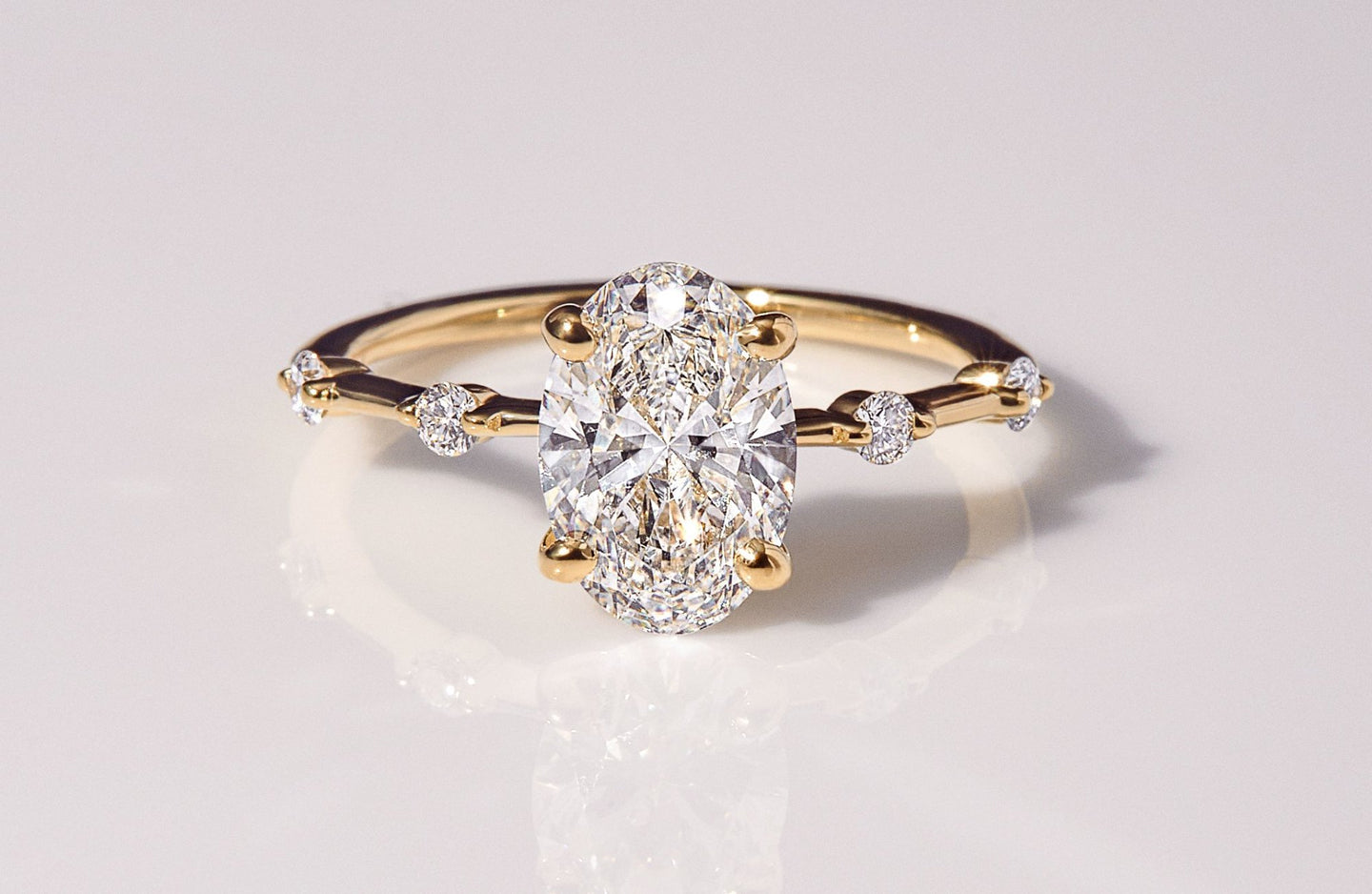
Fancy Cuts
Anything that isn't a round shape requires a fancy cut.
Modified Brilliant Cuts
A modified brilliant-cut diamond is a diamond altered from its traditional round shape. Pear, marquise, cushion, oval, and heart are all examples of modified brilliant cuts.
Step Cuts
Step-cut diamonds have rectangular facets. Compared to Brilliant cuts, step cuts can have less brilliance and fire due to the shape of their faceting. Emerald, asscher, and baguette diamonds are examples of step cuts.
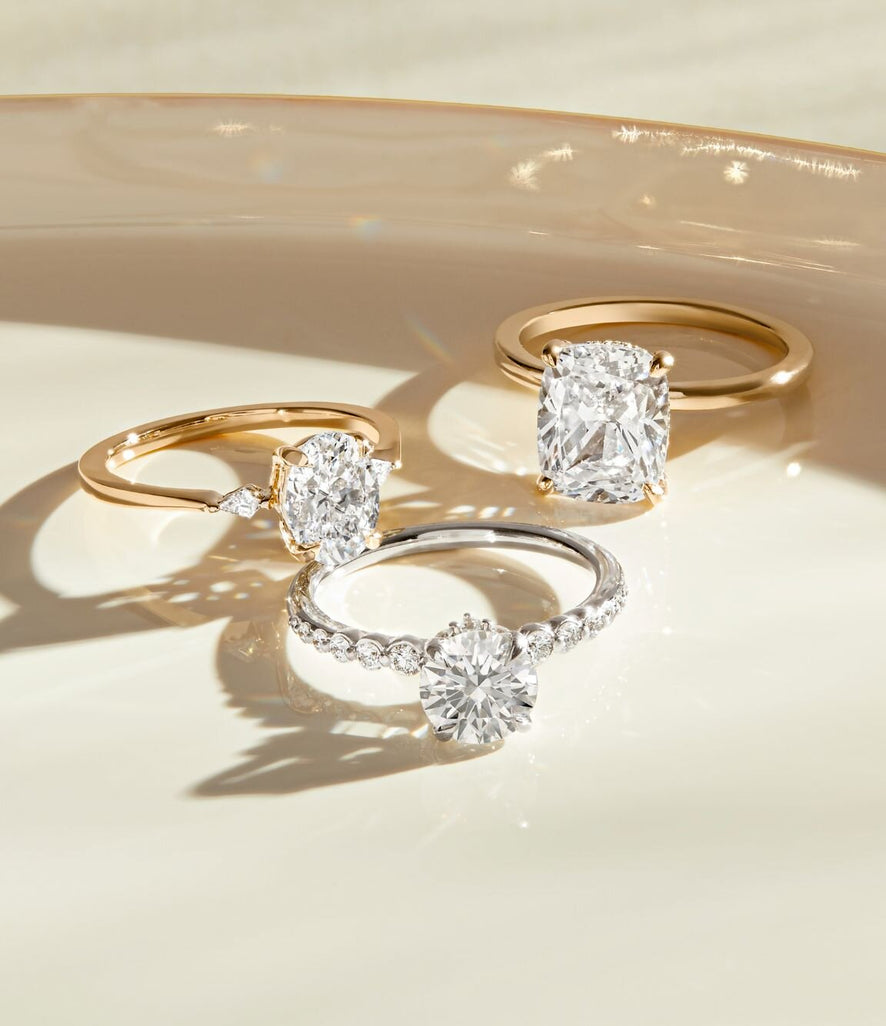
Fancy Cuts
Anything that isn't a round shape requires a fancy cut.
Rose Cuts
Unlike step cuts or brilliant cuts, the lower halves of rose cuts are relatively flat. While this means they can be low profile, they don't feature the same brilliant sparkle. Any diamond shape can be rose cut, though round is the most common rose cut.
Vintage Cuts
Before modern technology, diamond cutting was a slow process — so the less material a cutter removed from the original rough diamond, the better. Because of this, old mine-cut and euro-cut diamonds typically have larger facets that result in less sparkle than a diamond of today’s standard.
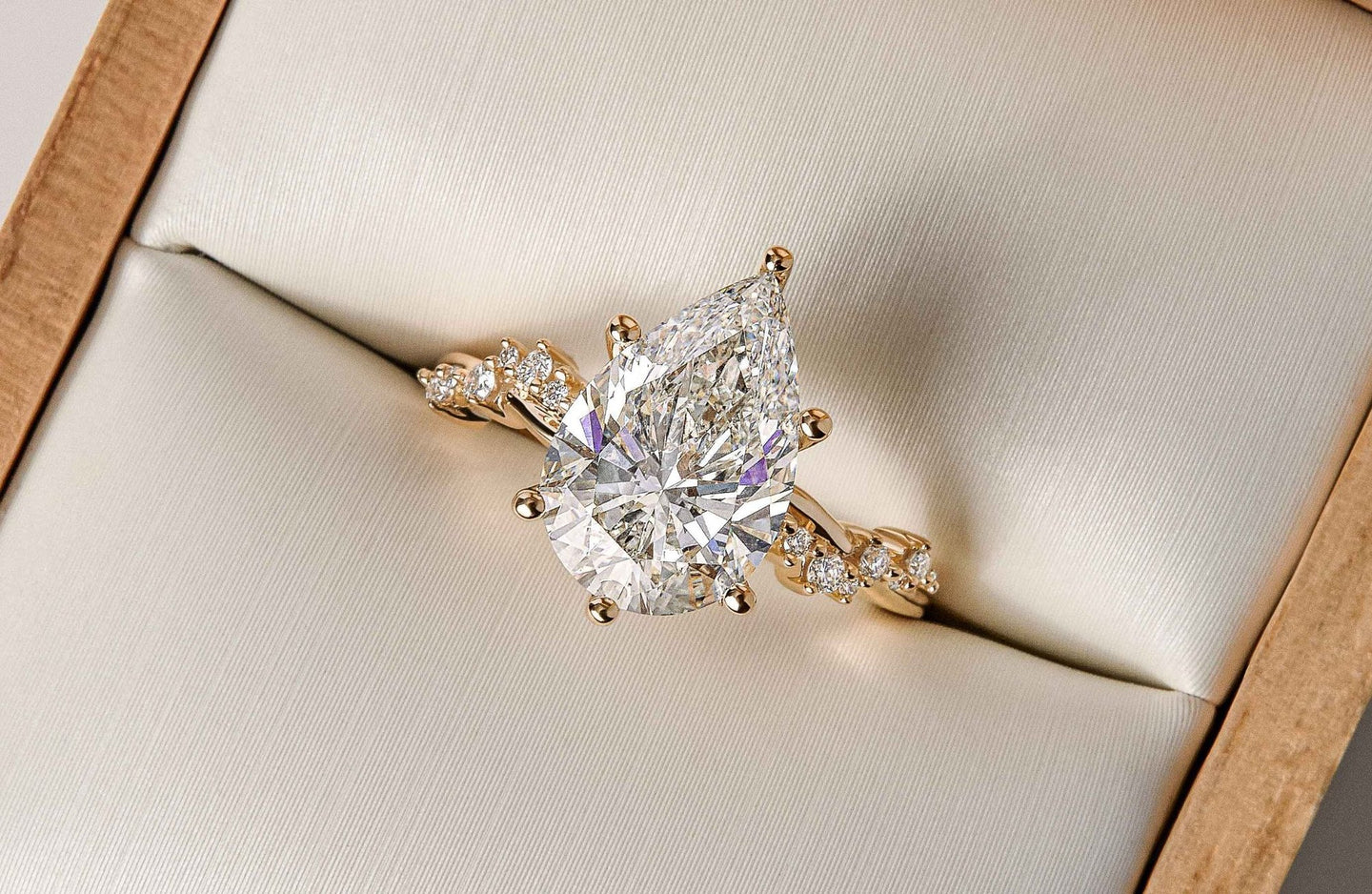
How Does Diamond Cut Impact Price?
Grades in all of the 4 C's can impact price. Cut is no different — generally, the higher the cut grade, the higher the price. Finding the right diamond is a balancing act between your budget and the 4 C's. For example, if sparkle is the most important to you, you may need to prioritize cut and sacrifice on carat, color, or clarity to stay within budget.
Diamond Cut FAQ's
What's the difference between diamond cut and diamond shape?
Diamond cut and diamond shape are not the same thing. Diamond shape refers to the external outline of a diamond (round, oval, or marquise, for example). Diamond cut refers to the precision and artistry used to craft a diamond's internal faceting and, therefore, brilliant sparkle. While both shape and cut are critical factors to consider when picking the perfect diamond, we suggest first deciding on the shape and then finding a diamond that balances the 4 C's of cut, color, carat, and clarity with your budget.
Is cut the most important of the 4 C's?
All of the 4 C's are important. Which will be the most important depends on your preferences. If a super sparkly diamond is imperative for you, cut will be the most important.
What is the most expensive diamond cut?
The most expensive diamond cut is generally the Excellent/Super Ideal cut, as it is the highest-quality cut grade. The ultimate price of the diamond will depend on the balance of all 4 C's.
What is the cheapest diamond cut?
The most affordable diamond cut is generally the Poor cut, as it is the lowest-quality cut grade. The ultimate price of the diamond will depend on the balance of all 4 C's. We don't recommend nor offer Poor-cut diamonds. We suggest at least a Very Good cut diamond to balance sparkle and budget.
Which diamond cut sparkles the most?
An Excellent/Super Ideal cut diamond will sparkle the most. A round brilliant diamond with an excellent cut grade will generally provide the most sparkle out of all shape/cut combinations.
What is the best diamond cut?
Use this section to answer a question, provide product information, or talk about your brand.
What is use to cut a diamond?
As diamond is the hardest naturally occurring mineral on Earth, a laser or saw coated in diamond dust must be used to cut it.
